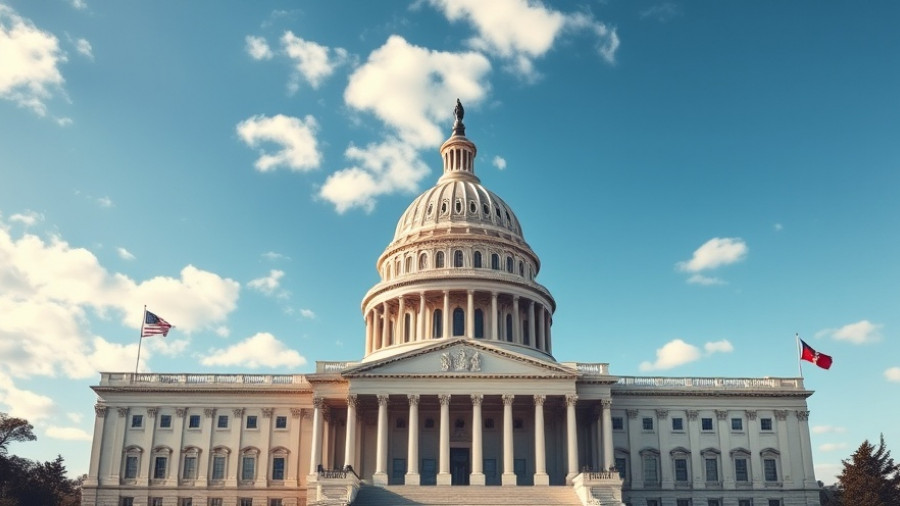
Understanding the Senate's Rejection of Trump’s Tariff Policies
The U.S. Senate recently made headlines by challenging former President Trump’s tariff policies, a move that reflects growing concern over the significant economic burdens these tariffs impose on various sectors, especially manufacturing and construction.
Why Tariffs Matter to Businesses and Consumers
Tariffs, essentially taxes levied on imported goods, have far-reaching effects on the economy. They are designed to protect domestic industries from foreign competition; however, they often lead to increased prices for consumers and businesses alike. According to the U.S. Chamber of Commerce, broad-based tariffs disrupt supply chains, particularly affecting small businesses that are less equipped to absorb these costs. This trend parallels a growing economic narrative highlighting the need for free trade agreements that foster growth rather than inhibit it.
Impact on Manufacturing and Construction
Manufacturing sectors are among the most at risk, as they often rely on imported materials that become more expensive when tariffs are enacted. A recent analysis noted that nearly 19 out of 25 U.S. industries that are heavily impacted by tariffs belong to manufacturing. Industries such as auto production face rising input costs, which can ultimately lead to higher prices for consumers, job losses, or even business closures. Furthermore, the construction industry, which sees many imports of raw materials, is also facing increased costs that could hinder infrastructure development and housing projects.
Why Small Businesses are Struggling
Small businesses, often considered the backbone of the American economy, are disproportionately affected by rising tariffs. They typically have tighter margins and less flexibility to absorb increased costs, leading to price hikes for consumers or reduced spending on wages and expansion. The U.S. Chamber of Commerce reports that small businesses face a tax burden amounting to $200 billion annually due to tariffs, and many business owners express that these tariffs pose an existential threat to their operations. Hearing firsthand experiences from small business owners, such as those in the food industry facing higher costs for everyday items like coffee, highlights the human impact of these financial policies.
Long-Term Predictions for the U.S. Economy
Economists predict that the long-term effects of these tariffs might stifle economic growth rather than spur on domestic production as intended. While some U.S. manufacturers may appear to benefit from lowered competition, the overall economic repercussions—including retaliatory tariffs impacting U.S. exports—could lead to a downturn in sectors critical for American jobs. Additionally, the increasing costs of building materials in the construction sector may contribute to a slowdown in housing supply and rising prices for consumers, further complicating the landscape for homebuyers and renters alike.
Unpacking the Political Ramifications
Political dynamics surrounding tariffs are complex and marked by regional disparities. Midwestern states, like Michigan and Indiana, which rely heavily on manufacturing jobs, may bear the brunt of the negative economic effects of tariffs. Residents in these states, many of whom supported Trump during his presidency, could find themselves grappling with job losses or financial strain, leading to potential shifts in voter sentiment as they evaluate the long-term impacts of current trade policies.
Conclusion: The Path Forward
The Senate's recent actions against Trump's tariffs underscore a critical moment for U.S. economic policy. As stakeholders in the home services industry, both contractors and homeowners should stay informed on these developments, as changes in tariff policies can lead to divergent costs in home renovation and improvement projects. By fostering open discussions about the role of tariffs in the economy and advocating for policies that support small businesses and balanced trade practices, there is potential for a robust and sustainable economic future.
 Add Row
Add Row  Add
Add 




Write A Comment